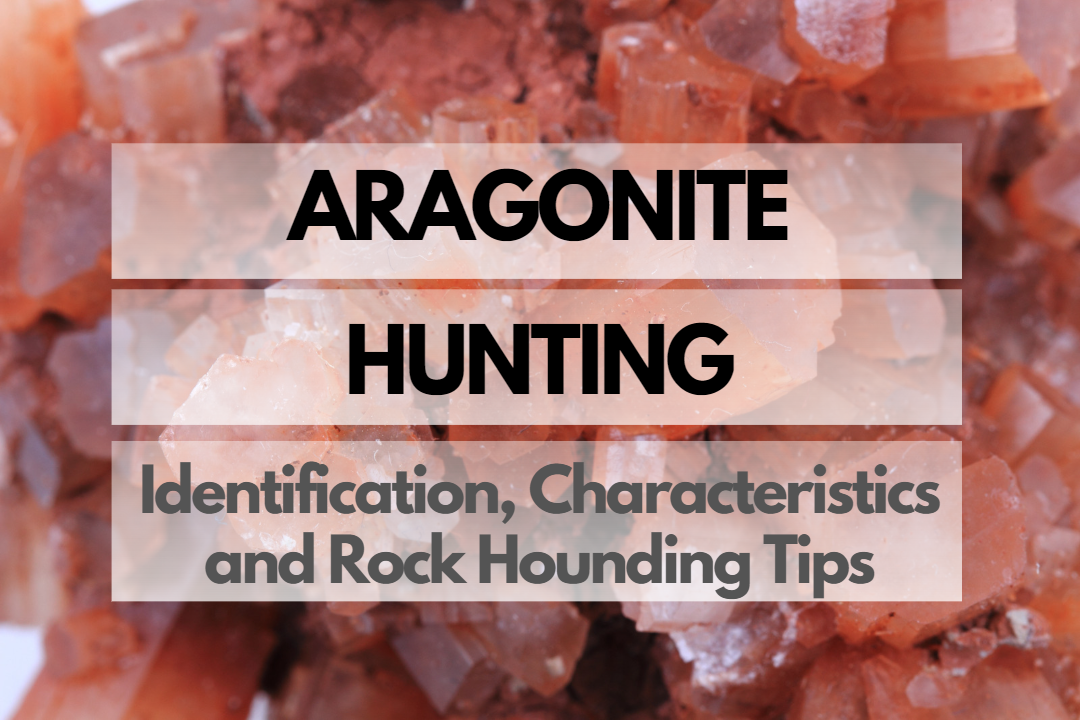Explore the fascinating world of Aragonite, a captivating mineral that delights collectors and enthusiasts alike with its unique crystal structure, stunning colors, and intriguing origins. Embrace the thrill of the hunt as we delve into the history, properties, uses, and value of this remarkable mineral.
History & Origin of Aragonite
Aragonite was first described in 1797 by German geologist Abraham Gottlob Werner. The mineral owes its name to the location of its initial discovery, the Aragon River in Spain. Aragonite has been found in various cultures throughout history, often used for ornamental and practical purposes, such as in the construction of the ancient Egyptian pyramids. In metaphysical circles, Aragonite is believed to possess stabilizing and grounding properties, making it a popular choice for meditation and energy work.
Aragonite Identification & Physical Properties
As a polymorph of calcium carbonate, Aragonite shares the same chemical composition as Calcite but boasts a distinct crystal structure. Use the following table as a helpful guide to identify and distinguish Aragonite from other minerals:
| Property | Aragonite |
|---|---|
| Chemical formula | CaCO3 |
| Crystal system | Orthorhombic |
| Luster | Vitreous to resinous |
| Streak | White |
| Transparency | Transparent to translucent |
| Cleavage | Poor |
Aragonite Colors
Aragonite exhibits a wide range of colors, including white, colorless, gray, yellow, green, blue, and brown. The mineral’s vibrant hue is often attributed to impurities or inclusions of other elements.
Aragonite Hardness
With a Mohs hardness of 3.5 to 4, Aragonite is considered a relatively soft mineral. As a result, it is crucial to handle specimens with care to prevent damage or breakage.
Aragonite Types
Various forms of Aragonite exist, each with its unique crystal structure and appearance. Here, we highlight some of the most well-known types:
Tufa
Tufa is a porous, often spongy-looking variety of Aragonite that forms in the vicinity of mineral springs or hot springs. It is commonly used as a building material and in water filtration systems.
Travertine
Travertine is a dense, banded variety of Aragonite that forms in caves and around hot springs. It is prized for its attractive appearance and is frequently used as a decorative stone in construction and interior design.
Sinter
Sinter is a fine-grained, compact variety of Aragonite that forms as a deposit from mineral-rich waters. This type is commonly found lining the walls of caves and hot springs.
Aragonite Uses
Aragonite boasts a range of uses, including:
- Construction and interior design: Travertine and Tufa varieties are popular choices for building materials and decorative elements.
- Water filtration: Tufa Aragonite is often employed in water purification systems due to its porous structure.
- Crystal healing and metaphysical practices: Aragonite is believed to possess grounding and stabilizing energies, making it a popular choice for meditation and energy work.
- Collectible specimens: Aragonite’s unique crystal structures and vibrant colors appeal to mineral enthusiasts and collectors.
How Much Is Aragonite Worth?
The value of Aragonite varies depending on factors such as size, quality, color, and rarity. Common varieties like Tufa and Travertine may cost a few dollars per pound, while rare and vibrant specimens can fetch higher prices, ranging from $10 to $100 or more. Ultimately, the worth of an Aragonite specimen is subjective and depends on the individualcollector’s appreciation for its unique beauty and characteristics.
Aragonite Rock Hounding Tips
Embarking on an Aragonite hunting adventure is an exciting and rewarding experience for both novice and seasoned rock hounds. To ensure a successful and enjoyable hunt, consider the following tips and tricks:
Essential Tools and Equipment
Equipping yourself with the right tools and gear is crucial for a successful Aragonite hunting expedition. Some essential items include:
- Rock hammer: Ideal for breaking open rocks and extracting specimens.
- Chisel: Helpful for splitting rock layers and removing Aragonite crystals.
- Safety goggles: Protect your eyes from flying debris while chiseling or hammering.
- Hand lens or loupe: Magnify your finds for closer inspection and identification.
- Field guide: A reference book featuring Aragonite and other minerals can aid in identification.
- Backpack or collecting bag: Carry your tools and specimens with ease.
- GPS device or map: Keep track of your location and mark valuable hunting spots.
Safety Tips
Prioritize safety while rock hounding to ensure an enjoyable and accident-free experience. Keep these safety tips in mind:
- Wear appropriate clothing, including sturdy footwear, gloves, and a hat for sun protection.
- Bring plenty of water, sunscreen, and insect repellent.
- Never venture out alone; always bring a buddy or inform someone of your whereabouts.
- Be mindful of your surroundings, especially when hammering or chiseling rocks.
- Respect local wildlife and practice Leave No Trace principles.
Aragonite Hunting: Where to Find Aragonite
Aragonite can be found in various locations worldwide, including caves, hot springs, and mineral deposits. The following table highlights some notable Aragonite hunting sites in different countries:
| Site/Area | City/State/Country |
|---|---|
| Mollusk Quarry | Vienna, Austria |
| Capo d’Orlando | Messina, Sicily, Italy |
| Cave of the Crystals | Naica, Chihuahua, Mexico |
| Mammoth Hot Springs | Yellowstone National Park, Wyoming, USA |
| Carlsbad Caverns | Carlsbad, New Mexico, USA |
Caring For Your Aragonite
Proper care and handling of your Aragonite specimens will preserve their beauty and integrity. Consider these tips:
- Store Aragonite in a cool, dry place away from direct sunlight to prevent color fading.
- Handle specimens gently, as Aragonite is relatively soft and prone to damage.
- Clean Aragonite with a soft brush and distilled water; avoid using harsh chemicals or abrasives.
- Display your Aragonite in a protective case or cabinet to minimize dust accumulation and accidental breakage.
Additional Resources
Expand your knowledge and connect with fellow Aragonite enthusiasts through these helpful resources:
- U.S. Geological Survey: https://www.usgs.gov/
- Mindat.org: https://www.mindat.org/
- Rock & Gem Magazine: https://www.rockngem.com/
- The-Vug.com: https://www.the-vug.com/
- Mineralogical Society of America: http://www.minsocam.org/
Additional Aragonite FAQs
What are the benefits of Aragonite?
While primarily valued for its aesthetic appeal, Aragonite also has practical uses. It serves as a source of calcium carbonate in agriculture, aquaculture, and industry. Additionally, some people believe in its metaphysical properties, associating it with grounding, stabilizing energy and emotional healing.
Do Aragonite have any healing properties?
Although scientific evidence is lacking, some individuals attribute various healing properties to Aragonite. These include promoting emotional balance, reducing stress, enhancing concentration, and supporting bone health. Remember that these claims are rooted in personal belief and should not replace professional medical advice.
Do Aragonite have any spiritual meaning?
In the realm of crystal healing and metaphysics, Aragonite is said to possess grounding and stabilizing properties. It is believed to help individuals connect with the Earth’s energy, maintain emotional balance, and develop patience and discipline. However, these spiritual associations are subjective and not scientifically proven.
Do I need a permit to go Aragonite hunting?
Permit requirements for rock hounding vary depending on the location and land ownership. In the United States, some public lands managed by the Bureau of Land Management (BLM) allow recreational rock collecting without a permit. However, other areas may have different regulations. Always research the specific area you plan to visit and adhere to local rules. For more information on permits in the United States, visit the BLM website: https://www.blm.gov/programs/energy-and-minerals.
Closing Thoughts
Aragonite rock hounding is an enjoyable and educational activity for enthusiasts of all ages and skill levels. By following the tips and guidelines provided in this article, you’ll be well-equipped to embark on a successful Aragonite hunting adventure. So, gather your tools, plan your expedition, and discover the captivating world of Aragonite!

